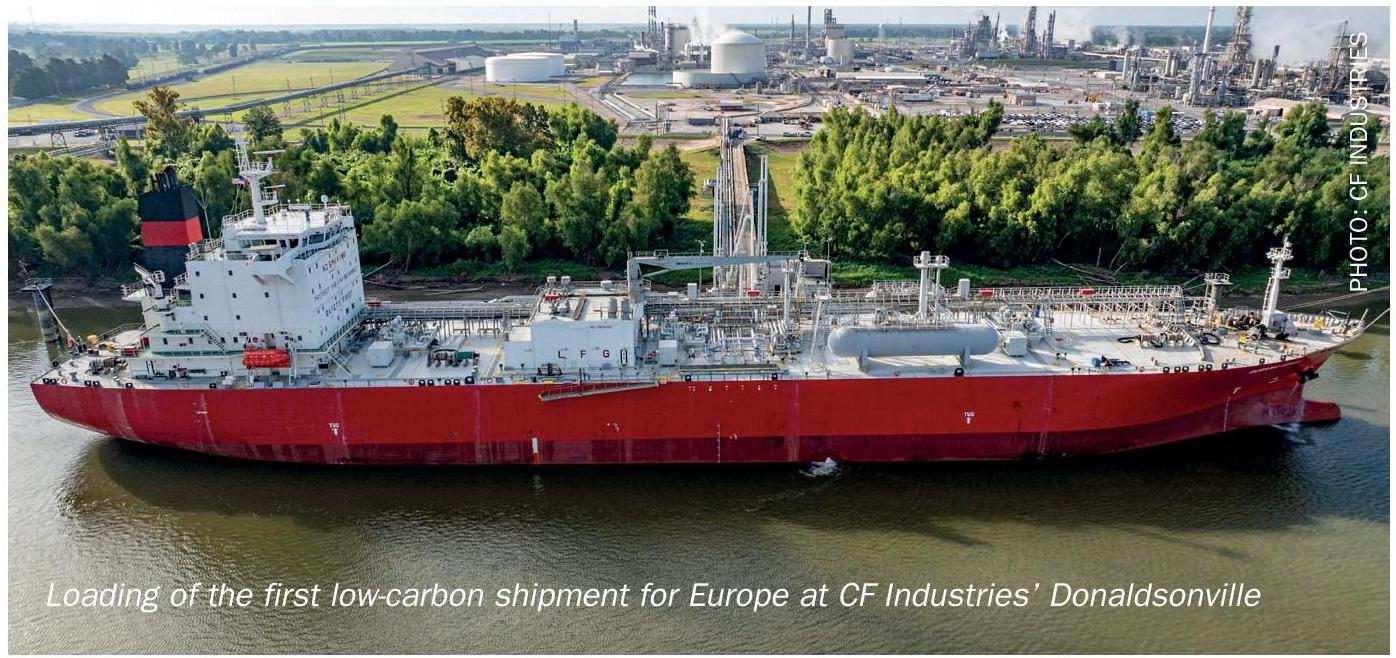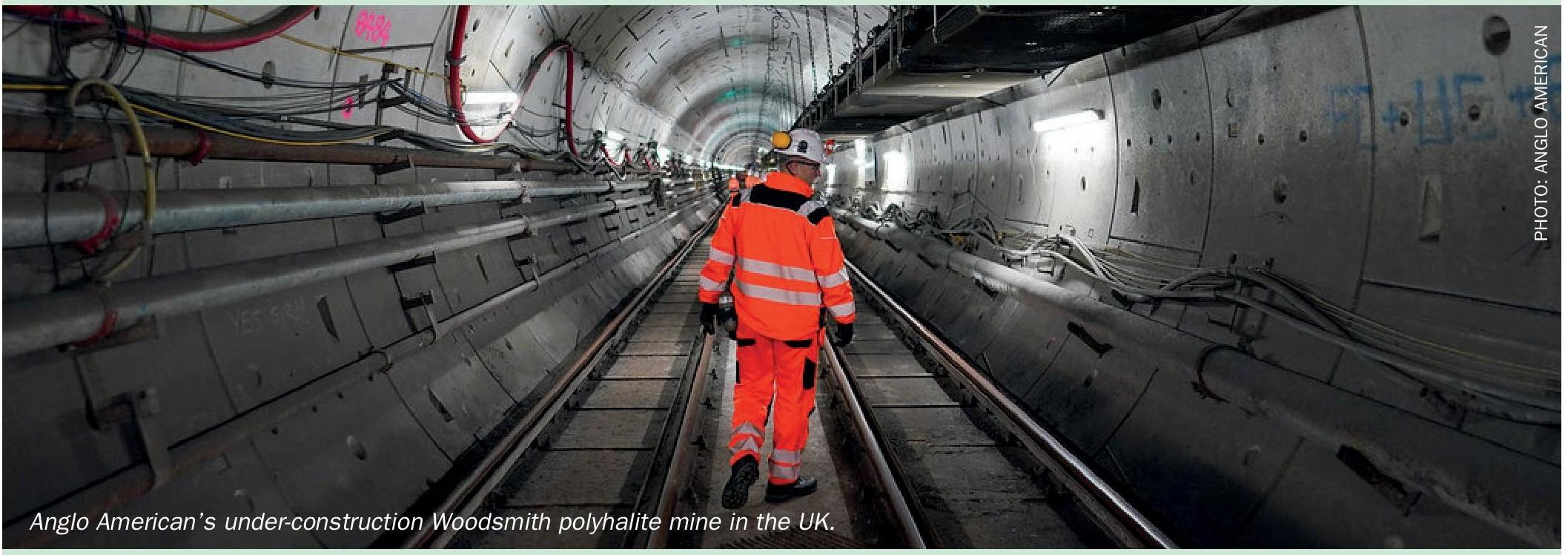Nitrogen+Syngas 393 Jan-Feb 2025

31 January 2025
Long term carbon pricing
CARBON PRICING
Long term carbon pricing
High energy storage costs for renewable-based technologies are likely to make European long term carbon prices considerably higher than their present levels.
Controlling emissions of carbon dioxide and equivalent gases in order to mitigate the worst effects of man-made climate change has become one of the defining issues of the first half of the 21st century. However, actually achieving change on the scale required in a meaningful timescale has been a long and arduous process. Concrete progress came from the United Nations Framework Convention on Climate Change (UNFCCC), which was signed in 1994 by 154 (now 165) countries and other parties such as OPEC and the European Union. The UNFCCC in turn mandated regular annual summits, called the Conference of the Parties (COP) to discuss and ratify agreements. In 1997 the Kyoto meeting first set binding targets on emissions reduction, mainly for developed countries, and created a set of new legal instruments for emissions reductions and removals to be tracked and traded via so-called ‘flexibility mechanisms’. The guiding principle was to set a price for carbon emissions which could then be traded via international emissions trading.
Carbon pricing
The aim for carbon pricing mechanisms is to generate a sufficient cost or incentive via carbon credits/penalties to drive investment in less polluting technologies. However, in order to work as intended, the carbon price has to reach a sufficient level. The UN estimates that the carbon price required to cut emissions by 30% by 2030 would be around $40/tonne, and it is estimated that for carbon capture and storage (CCS) to be commercial it requires a carbon price of $60-100/tonne, while existing direct air capture (DAC) processes require up to $200/tonne to break even.
A disparity between the costs required to drive change and the costs that industry was willing to bear emerged in the early days of the European Union’s flagship emissions trading scheme (ETS), which has become the model for such schemes worldwide. The EU ETS suffered initially from over-caution by regulators about the impact on industry and hence considerable over-allocation of carbon credits and opt-outs, meaning that the EU ETS generated carbon prices of only around e3-5/tonne in the 2010s, easily bearable by carbon intensive industries. It was not until 201617 when a subsequent round of credit issuance attempted to correct this by reducing the credits available. This had the desired effect of tightening the market considerably, leading to prices rising to around e25/tonne CO2e from 2018-2020, and e50/tonne in 2021, rising towards e80/t after the Russian invasion of Ukraine, and staying at a level of e60-80/t since then. Figure 1 shows the development of EU ETS prices since 2010.

Recent developments
As the scheme has matured, European ETS pricing has become primarily driven by the demands of power generators for credits. A higher proportion of renewable energy being generated tends to lead to lower demand for credits and hence lower carbon pricing, while the high gas prices that Europe has endured since the shut offof most Russian gas supplies to the continent conversely has tended to lead to more reliance on coal-based power production, resulting in higher demand for credits and higher carbon pricing.
For example, CRU’s recent short term EU carbon price report notes that in November 2024, the EU ETS carbon price dropped to e64 but then increased to e70 by the end of the month. That rise was primarily driven by a decline in renewables output, particularly wind and hydro-electric energy generation, with wind generation decreasing in November. Hydroelectric output decreased compared to October but remained relatively average for the season, and this average level was expected to continue into December. Nuclear power generation in Europe increased in November compared to previous months, exerting downward pressure on the carbon price. Overall, the drop in renewables led to increased use of gas and coal, raising the carbon price. However, despite higher gas prices, there was no particular evidence of gas-to-coal switching; instead, both gas and coal usage increased. Overall, power demand remained lower than historical averages, due to prevailing weak economic conditions in industrial users, especially steel production, though high gas prices continued to provide a risk of more gas to coal switching.
Longer term pricing
Looking to 2030 and even 2050, CRU has also recently published a Long-Term EU Carbon Price Report which provides an in-depth analysis of the European Union carbon pricing forecasts, influenced by shifts in market dynamics, technological advancements, and stringent decarbonisation goals. The report highlights significant adjustments to recent short-,medium-,and long-term carbon price projections, emphasising the critical role of emerging green technologies like hydrogen and renewable energy in meeting climate targets.
As a result, the EU carbon price forecast for 2030 has been adjusted to $134/ tCO2 (in 2024 terms), reflecting a 1% decrease compared to earlier predictions. This revision stems from an increase in the Total Number of Allowances in Circulation (TNAC), signalling lower-than-anticipated demand for allowances and looser market conditions. This reduced demand is influenced by projections of lower fossil fuel consumption and a general decrease in emissions from major sectors like power, steel, and cement.
By 2050, the carbon price is expected to climb to $206/tCO2 , a 3% increase over prior estimates. This upward revision is primarily attributed to the incorporation of hydrogen storage costs into the modelling. Hydrogen is considered a cornerstone of EU decarbonisation efforts, and the additional storage requirements for variable electrolysis have raised abatement costs, particularly for hydrogen-based technologies. The adjustments ensure alignment with the EU’s climate neutrality goals for 2050.
In scenarios requiring full decarbonisation by 2050, such as the “Net-Zero by 2050” (NZ ’50) scenario, the carbon price forecast has been dramatically revised upward by 31% to $367/tCO2 . This reflects the high costs associated with achieving 100% emission reductions, driven by reliance on expensive technologies like green ammonia.
Medium term trends
The medium-term forecast reflects reduced emissions from thermal coal and natural gas consumption, particularly in power generation. This reduction is most notable in Germany, where thermal coal usage has declined significantly. The overall emissions forecast for the period 2024– 2028 has been revised downward by ~48 MtCO2e for thermal coal and an additional ~47 MtCO2e across the steel and cement sectors. Combined, these reductions have led to a loosening of market conditions and a downward revision of carbon price expectations.
Total Number of Allowances in Circulation forecasts have been revised upward for 2024–2028 due to reduced demand for EU Allowances (EUAs). This reflects a looser carbon market, with allowances remaining plentiful. As a result, carbon prices are unlikely to experience significant upward pressure until the Market Stability Reserve (MSR) mechanism begins withdrawing allowances in 2025. This will tighten supply, leading to steeper price increases through 2028. After 2028, TNAC is expected to fall below the MSR’s threshold for releasing allowances, stabilising market conditions. The carbon price is predicted to plateau at $134/tCO2 by 2030, ensuring alignment with the EU’s Nationally Determined Contributions (NDCs).
Long-term drivers
Hydrogen storage costs have been a key factor driving long-term price increases. Hydrogen storage, particularly in salt caverns, is essential for ensuring stable supply of hydrogen to industrial processes because of the highly variable output of electrolysis-based systems powered by renewable energy. This storage requirement is calculated to add approximately $0.8/kg to the levelised cost of hydrogen (LCOH) by 2050, raising the costs of producing green hydrogen and ammonia. Consequently, the carbon price forecast for technologies reliant on these fuels, such as marine fuels and steel production, has also risen.
Renewable energy costs, particularly for solar power, are another critical factor influencing long-term forecasts. To better develop our understanding of renewable energy costs CRU gas collected real-world data for solar projects for Europe that became operational between 2020 and 2024. This research confirms that European costs fall in line with the projected costs between our two scenarios. Data from operational solar projects across Europe confirms a steady decline in capital expenditure costs, aligning with previous forecasts. However, the cost reductions vary by country, with German projects experiencing sharper declines compared to French projects. However, modelling suggests that the optimal solar share for Europe’s power grid remains low (10% in Germany) due to high energy storage costs. Countries closer to the equator, such as Spain, exhibit higher optimal solar shares (~17%) due to more consistent solar output. Increasing the share of solar electricity generation beyond these levels would involve significantly higher grid costs. The integration of solar power into the grid also requires substantial energy storage to balance seasonal variability. For Germany, for example, increasing the share of solar based generation from 10% to 25% would necessitate an additional day’s worth of storage capacity, highlighting the challenges of balancing renewables with grid stability.

Green ammonia
The displacement of heavy fuel oil (HFO) with green ammonia as a marine fuel is identified as a high-cost abatement action. The increase in green ammonia costs (~$170/t by 2050) due to higher hydrogen costs underscores the financial challenges of achieving full decarbonisation. This drives the upward revision of carbon prices, particularly under the NZ ’50 scenario.
Impact of emissions reduction policies
There is some sensitivity to the analysis depending upon emissions reduction policies adopted by EU governments. The base case scenario, which assumes moderate emission reductions aligned with current nationally determined contributions (NDCs), forecasts a carbon price of $206/tCO2 by 2050. This reflects a balance between technological advancements and policy-driven reductions. Carbon prices would conversely by lower under the ‘stated policies’ scenario, which assumes no significant policy changes beyond those already in place. This would put the carbon price at around $105/tCO2 by 2050, a slight upwards revision on previous forecasts.
On the other hand, were the EU to determinedly move towards the net-zero scenario (‘NZ ’50’), requiring full decarbonisation, the steep costs associated with achieving 100% emissions reduction using high cost technologies would make themselves felt in the sharpest price increase, with a forecast of $367/tCO2 by 2050. Progressively higher carbon prices are required to drive innovation and adoption of high-cost abatement technologies.
The implication for policymakers is that there needs to be a focus on fostering investment in green hydrogen, renewable energy, and energy storage to bring these prices down and meet long-term climate goals. Achieving cost-effective decarbonisation requires continued advancements in renewable energy and hydrogen technologies. Governments and private sectors should therefore prioritize R&D in low-cost storage solutions and efficient electrolysers. Policymakers must also address the high storage costs associated with solar power integration to ensure balanced renewable energy deployment. While the report highlights the necessity of aggressive targets under scenarios like NZ ’50, it also suggests that lower-cost alternatives should be used where possible. Policymakers should consider a mix of strategies to achieve emission reductions without disproportionately burdening industries.
Decarbonisation policies should target high-emission sectors like power generation, steel, and cement. Specific incentives may be needed to promote the transition to green hydrogen and ammonia in these industries.






